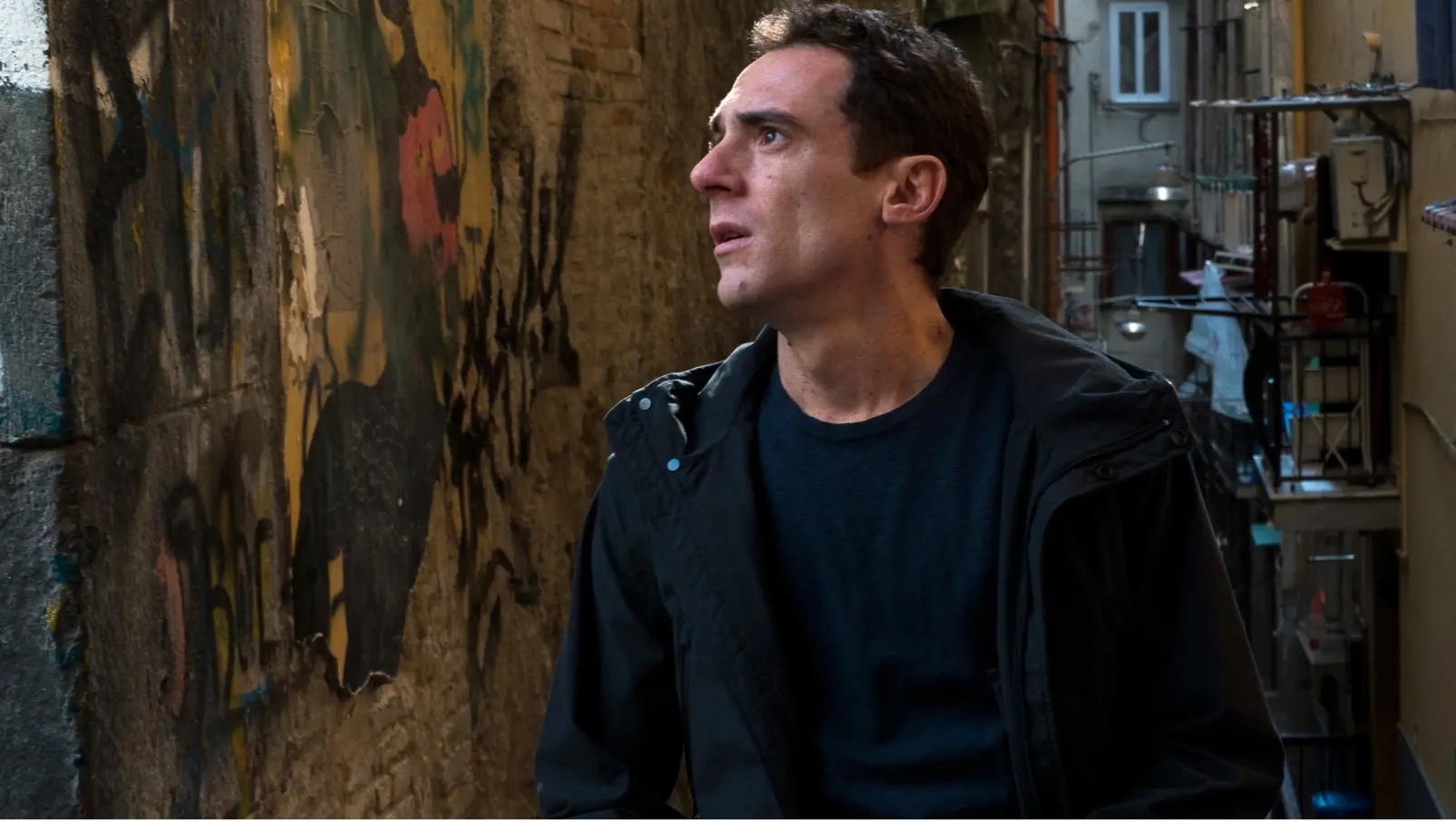

Set in middle-class Naples, Lorenzo lives in the historic city centre, in a beautiful ochre-coloured old building next to the church of Santi Cosma and Damiano in Largo dei Banchi Nuovi. As he climbs the stairs, the street below is visible from the window. We’re in the old part of the open-air set that is the city of Naples, where Lorenzo often wanders around, through the paved and cobbled alleyways and old buildings with their low balconies, between Largo dei Bianchi Nuovi and the Santa Chiara Monastery, between Via Candelora, Via Santa Chiara and Piazzetta Monticelli.
It’s a Naples that is always bustling, even when Fabio, Michela and their children sit down at a table in a bar in the 19th-century Galleria Umberto I and Fabio has a violent discussion with an immigrant street peddler, right under the nose of Lorenzo, seated at another table just a few feet away.
But in the film there’s room for another Naples, the modern Naples of the courthouse, where Elena, Lorenzo’s daughter, works as a translator, and that of the shipyards (the Cantieri del Mediterraneo at the port), where Fabio works.
Set in middle-class Naples, Lorenzo lives in the historic city centre, in a beautiful ochre-coloured old building next to the church of Santi Cosma and Damiano in Largo dei Banchi Nuovi. As he climbs the stairs, the street below is visible from the window. We’re in the old part of the open-air set that is the city of Naples, where Lorenzo often wanders around, through the paved and cobbled alleyways and old buildings with their low balconies, between Largo dei Bianchi Nuovi and the Santa Chiara Monastery, between Via Candelora, Via Santa Chiara and Piazzetta Monticelli.
It’s a Naples that is always bustling, even when Fabio, Michela and their children sit down at a table in a bar in the 19th-century Galleria Umberto I and Fabio has a violent discussion with an immigrant street peddler, right under the nose of Lorenzo, seated at another table just a few feet away.
But in the film there’s room for another Naples, the modern Naples of the courthouse, where Elena, Lorenzo’s daughter, works as a translator, and that of the shipyards (the Cantieri del Mediterraneo at the port), where Fabio works.

Loosely based on Lorenzo Marone’s book La tentazione di essere felici (2015), at some point Lorenzo, who used to be a famous lawyer, stopped loving his children. When Fabio and Michela, a couple from the North, move into the apartment next to his, her trustworthy nature succeeds in breaking down his hard shell. Until something happens that puts everyone’s lives in danger that is.